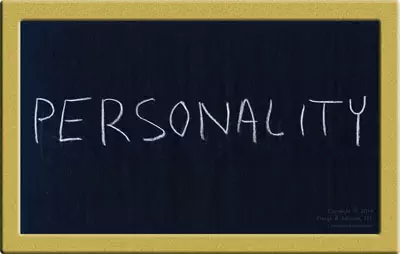Understanding The Big Five Personality Traits For Use At Work
- Understanding The Big Five Personality Traits For Use At Work
- Openness Personality Trait Unwrapped and Uncovered
- Conscientiousness Personality Trait Detailed and Perfected
- Extraversion Personality Trait Exposed and Exhibited
- Agreeableness Personality Trait Aligned And Affirmed
- Neuroticism Personality Trait Calmed and Cooled
- How to Use Bad Personality Traits to Assess Personalities
- Conscientiousness Personality In The Workplace And On The Team
Understanding the big five personality traits helps us assess personality types at work. That means being able to solve real problems in real time. Yet, much of the info on them is slanted. It tends to favor certain traits over others.

Understanding the five big personality traits is a good start for developing personality assessment skills.
The Big Five Personality Traits
For instance, the five traits are:
- Openness
- Conscientiousness
- Extraversion
- Agreeableness
- Neuroticism
What is the official term for being low in these though? Would it be closed-minded for open? Impulsive for conscientious? Disagreeable for agreeable? The info says nothing.
Moreover, who wants to be neurotic? Some use Emotional Stability in place of Neuroticism. Still, who wants to be emotionally unstable?
Even though the opposite of extraversion is introversion, the info shows bias here too. For instance, assertiveness and dominance are linked to extraversion. So introverts aren’t assertive and dominant?
Addressing Biases in the Big Five
To address these biases, I use the YinYang Problem-Solving approach. That means I ask two questions of each trait:
- What bad stuff shows up when I push these traits to the extreme?
- What counter force halts these traits from becoming extreme?
For instance, we have two main muscles in our arms. One allows flexing. The other allows extending. Pushing one to extreme at the cost of the other causes our arms to lock in place. They’re useless then. This is true for our traits.
When we apply these two questions to openness, extremely open people are more easily persuaded and distracted. They can’t stay off of anything new. The counter force that prevents these is selectiveness, being choosy.
So, rather than say those who don’t score high on openness are closed-minded, we can say they are highly selective, choosy. They take care in what they choose to explore and accept.
Applying these to the other traits, we find:
- The extreme of conscientiousness is strictness and perfectionism, not deviating from goal or process in the face of reality. The counter forces are flexibleness and adaptableness.
- The extreme of extraversion is shallowness, lacking in deep, extensive thoughts. The counter is depth, introspection.
- The extreme of agreeableness is conformism, going with the crowd. The counters are individualism and uniqueness.
- The extremes of emotional stability are dispassion, apathy and coldness. The counter is dynamism, showing a wide range of emotions even over the smallest things life offers.
Understanding the Big Five Personality Traits from Other Angles
By understanding the big five personality traits from these other angles, it’s easier to spot them. This makes for better assessments. This happens in two ways. That is because we can now spot:
- Their negative, extreme forms
- Their counter forms too such as selectiveness, flexibleness, depth, individualism and dynamism
These other angles help offset the subjectivity inherent in assessing personalities. For example, an agreeable person to one could be disagreeable to another.
The two ways above help yield these other angles. A more complete view forms. Thus, the big five traits become more helpful in developing our personality assessing skills at work.


